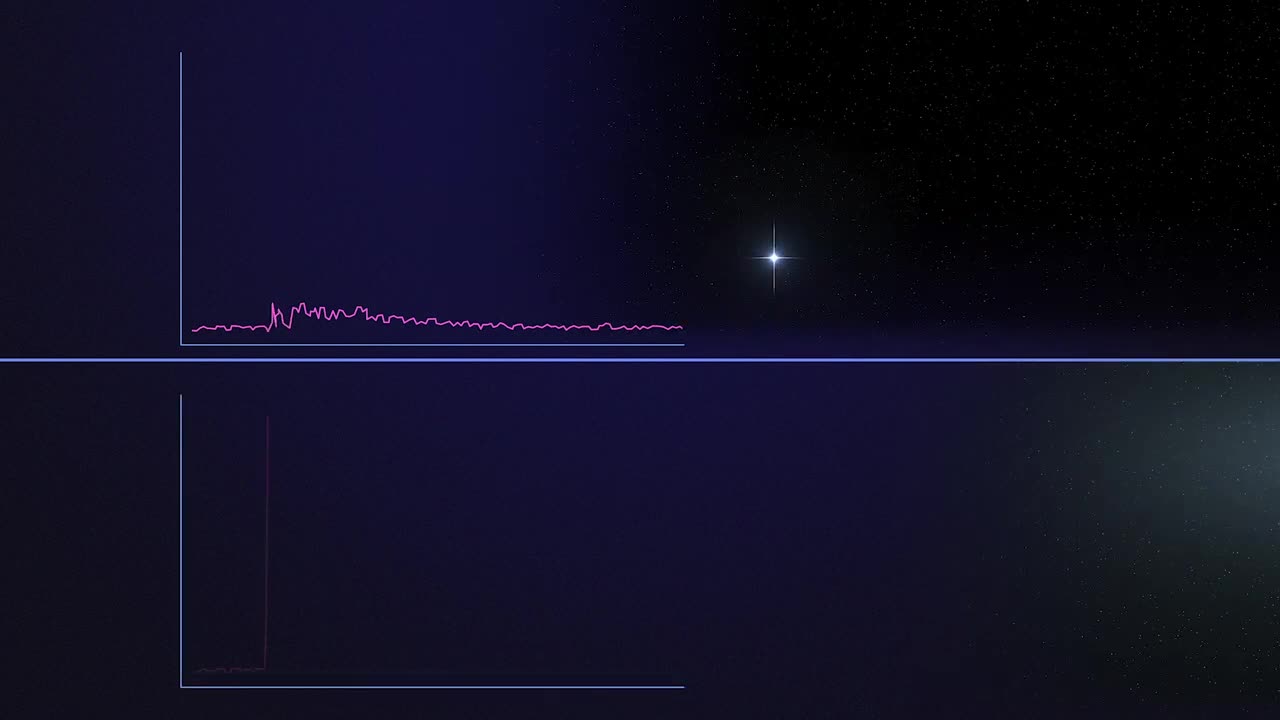Premium Only Content

NASA’s Fermi Mission Sees No Gamma Rays from Nearby Supernova
A nearby supernova in 2023 offered astrophysicists an excellent opportunity to test ideas about how these types of explosions boost particles, called cosmic rays, to near light-speed. But surprisingly, NASA’s Fermi Gamma-ray Space Telescope detected none of the high-energy gamma-ray light those particles should produce.
On May 18, 2023, a supernova erupted in the nearby Pinwheel galaxy (Messier 101), located about 22 million light-years away in the constellation Ursa Major. The event, named SN 2023ixf, is the most luminous nearby supernova discovered since Fermi launched in 2008.
Astrophysicists previously estimated that supernovae convert about 10% of their total energy into cosmic ray acceleration. Using Fermi observations of SN 2023ixf, scientists calculated an energy conversion as low as 1% within a few days after the explosion. This doesn’t rule out supernovae as cosmic ray factories, but it does mean we have more to learn about their production.
Scientists have been investigating cosmic ray origins since the early 1900s, but the particles can’t be traced back to their sources. Because they’re electrically charged, cosmic rays change course as they travel to Earth thanks to magnetic fields they encounter.
Gamma rays, however, do travel directly to us. And cosmic rays produce gamma rays when they interact with matter in their environment. Fermi is the most sensitive gamma-ray telescope in orbit, so when it doesn’t detect an expected signal, scientists must explain the absence.
In 2013, Fermi measurements showed that supernova remnants in our own Milky Way galaxy were accelerating cosmic rays, which generated gamma-ray light when they struck interstellar matter. But astronomers say the remnants aren’t producing enough high-energy particles to match scientists’ measurements on Earth.
One theory proposes that supernovae may accelerate the most energetic cosmic rays in our galaxy in the first few days and weeks after the initial explosion.
But supernovae are rare, occurring only a few times a century in a galaxy like the Milky Way. Out to distances of around 32 million light-years, a supernova occurs, on average, just once a year.
After a month of observations, starting when visible light telescopes first saw SN 2023ixf, Fermi had not detected gamma rays.
The researchers propose a few scenarios that may have affected Fermi’s ability to see gamma rays from the event, like the way the explosion distributed debris and the density of material surrounding the star.
Fermi’s observations provide the first opportunity to study conditions right after the supernova explosion. Additional observations of SN 2023ixf at other wavelengths, new simulations and models based on this event, and future studies of other young supernovae will help astronomers home in on the mysterious sources of the universe’s cosmic rays.
Music credit: "Trial" from Universal Production Music
Credit: NASA’s Goddard Space Flight Center
Producer: Scott Wiessinger (Rothe Ares Joint Venture)
Science writer: Jeanette Kazmierczak (University of Maryland College Park)
Narrator: Scott Wiessinger (Rothe Ares Joint Venture)
This video can be freely shared and downloaded at https://svs.gsfc.nasa.gov/14522. While the video in its entirety can be shared without permission, the music and some individual imagery may have been obtained through permission and may not be excised or remixed in other products. Specific details on such imagery may be found here: https://svs.gsfc.nasa.gov/14522. For more information on NASA’s media guidelines, visit https://nasa.gov/multimedia/guidelines.
-
 1:50:28
1:50:28
TheDozenPodcast
12 hours agoViolence, Abuse, Jail, Reform: Michael Maisey
90.7K4 -
 23:01
23:01
Mrgunsngear
1 day ago $5.28 earnedWolfpack Armory AW15 MK5 AR-15 Review 🇺🇸
78.5K12 -
 25:59
25:59
TampaAerialMedia
1 day ago $3.15 earnedUpdate ANNA MARIA ISLAND 2025
49.1K4 -
 59:31
59:31
Squaring The Circle, A Randall Carlson Podcast
14 hours ago#039: How Politics & War, Art & Science Shape Our World; A Cultural Commentary From Randall Carlson
37.6K3 -
 13:21
13:21
Misha Petrov
14 hours agoThe CRINGIEST Thing I Have Ever Seen…
30K55 -
 11:45
11:45
BIG NEM
10 hours agoWe Blind Taste Tested the Best Jollof in Toronto 🇳🇬🇬🇭
21.1K1 -
 15:40
15:40
Fit'n Fire
14 hours ago $0.47 earnedArsenal SLR106f & LiteRaider AK Handguard from 1791 Industries
18.3K1 -
 8:34
8:34
Mike Rowe
6 days agoWhat You Didn't Hear At Pete's Confirmation Hearing | The Way I Heard It with Mike Rowe
55.5K23 -
 7:13:44
7:13:44
TonYGaMinG
15 hours ago🟢LATEST! KINGDOM COME DELIVERANCE 2 / NEW EMOTES / BLERPS #RumbleGaming
74.2K4 -
 40:17
40:17
SLS - Street League Skateboarding
4 days agoEVERY 9 CLUB IN FLORIDA! Looking back at SLS Jacksonville 2021 & 2022 - Yuto, Jagger, Sora & more...
114K1